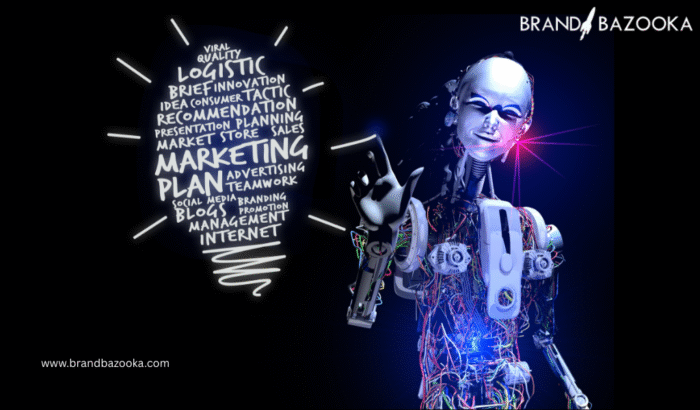Branding. It's a term that has become ubiquitous in the world of business and marketing.
You'll find thousands of opinions about it in textbooks, online articles, and seminars. And,
you will also find thousands of experts and agencies claiming to offer branding solutions.
With so much information available, it's easy to get overwhelmed and confused, not knowing
where to start. But fear not! In this ultimate practical guide, I will simplify the process and
show you how to build a brand that not only stands out but also connects deeply with your
target audience.
Step 1: Define Your Brand Identity
The first and most crucial step in building a successful brand is to define your brand identity.
This step involves understanding who you are as a company, what your core values and
mission are, and what sets you apart from your competitors. Start by asking yourself these
fundamental questions:
- What is the main purpose of our brand?
- What values and principles do we want our brand to represent?
- How do we want our brand to be perceived by our target audience and customers?
- What makes our brand unique and different from our competitors?
- How can we express our brand identity through visual elements and messaging?
Once you have clear answers to these questions, you can create a brand identity that
resonates with your audience and guides all your branding efforts.
Step 2: Know Your Target Audience
Your brand needs to speak directly to your target audience's wants, needs, and aspirations.
Understanding your audience is essential for effective branding. Conduct thorough market
research to gain insights into their preferences, pain points, and behaviors. Here are the
questions to ask.
- Who is our ideal customer or target audience?
- What are the demographics of our target audience (age, gender, location, income level,
etc.)? - What are their interests, preferences, and buying behaviours?
- What are the pain points and challenges our target audience faces?
- How can our brand fulfill the needs and desires of our target audience?
By knowing your audience inside out, you can tailor your branding messages and visuals to
create a strong emotional connection with them.
Step 3: Craft Your Brand Story
Humans are hardwired to respond to stories. Your brand story is more than just a history
lesson; it's an opportunity to connect with your audience on a personal level. Share the
journey of your brand, highlighting the challenges you've overcome and the values you stand
for. Ask questions like:
- What is the history and journey of our brand, from its inception to the present?
- What challenges have we overcome to establish and grow our brand?
- What are the core values and beliefs that have guided our brand's evolution?
- How can we craft a narrative that emotionally connects with our audience?
- What elements of our brand story can resonate with our target audience the most?
A compelling brand story creates authenticity and trust. It helps your audience understand
the heart and soul of your brand, which fosters long-term loyalty and engagement.
Step 4: Design a Memorable Logo and Visual Identity
Your brand's visual identity plays a significant role in how it's perceived. Design a memorable
and versatile logo that embodies the essence of your brand. Consider the colors,
typography, and overall aesthetics that best represent your brand identity. Here are the
questions to consider for a good logo and visual idenitity.
- What emotions and messages do we want our logo to convey?
- How can we design a logo that represents our brand's essence and identity?
- What colors and typography best reflect our brand personality?
- How can we ensure that our logo is versatile and scalable for different platforms?
- What visual elements can we use consistently across all brand materials?
A cohesive visual identity helps reinforce brand recognition and builds a sense of familiarity
with your audience.
Step 5: Create Brand Guidelines
To maintain consistency in your branding efforts, develop comprehensive brand guidelines.
These guidelines should outline how your logo, colors, fonts, imagery, and tone of voice
should be used across various channels and marketing materials. Here are the questions to
consider.
- What should be included in our brand guidelines?
- How do we ensure that all employees and stakeholders understand and adhere to the
brand guidelines? - What rules should be in place for the usage of our logo, colors, fonts, and other visual
elements? - How can we maintain consistency in our branding efforts across various marketing
channels? - How often should we review and update our brand guidelines to keep them relevant?
Brand guidelines provide clarity to everyone involved in your brand's promotion, ensuring
that you’re messaging is always on point and in line with your brand identity.
Step 6: Embrace Social Media and Content Marketing
In today's digital age, social media and content marketing are powerful tools for building a brand. Leverage platforms that align with your target audience's preferences and habits.
Questions you should ask yourself at this stage include:
- Which social media platforms are most relevant to our target audience?
- What type of content resonates best with our audience (e.g., blog posts, videos,
infographics)? - How can we use storytelling to communicate our brand's values and mission?
- What strategies can we employ to engage our audience and encourage interactions?
- How do we measure the effectiveness of our social media and content marketing efforts?
Answer these questions and use different social media analytics tools to crack this step.
Step 7: Deliver Exceptional Customer Experience
Your brand isn't just about the visual elements or marketing messages; it's about the
experience your customers have when interacting with your company. Delivering exceptional
customer service is paramount in building a brand that connects with its audience. Questions
to ask at this stage include:
- How can we ensure that every customer touchpoint reflects our brand identity?
- What training and resources do our employees need to deliver exceptional customer
service? - How do we handle customer feedback, complaints, and concerns in alignment with our
brand values? - What opportunities do we have to go above and beyond to exceed customer
expectations? - How can we build long-term relationships with customers through exceptional
experiences?
Training your employees to embody your brand values in their interactions with customers,
responding promptly to inquiries, addressing concerns with empathy, and going the extra
mile to exceed expectations, are a must!
Step 8: Partner with Influencers and Advocates
Leverage influencers and brand advocates – satisfied customers who genuinely love your
brand and are willing to share their positive experiences with others. They can be a powerful
way to amplify your brand's reach. Questions to ask yourself to make the right decision
about influencers and advocates:
- Which influencers align best with our brand values and target audience?
- How can we establish a genuine and mutually beneficial partnership with influencers?
- How do we identify and engage our brand advocates among our existing customers?
- What incentives or rewards can we offer to encourage brand advocacy and user-
generated content? - How can we measure the impact of influencer marketing and brand advocacy on our
brand awareness and reputation?
Influencer content, user-generated content and positive reviews can significantly impact your
brand's reputation and credibility.
Step 9: Monitor and Adapt
Branding is an ongoing process, and as your business evolves, so should your brand
strategy. Monitor the performance of your branding efforts regularly and gather feedback
from your audience. Here’s what to ask yourself.
- What key performance indicators (KPIs) should we track to measure the success of our
branding efforts? - How often should we evaluate and analyze our brand's performance and market
perception? - What methods can we use to gather feedback from our target audience and customers?
- How do we identify potential areas for improvement or adjustments in our branding
strategy? - How can we stay agile and adapt to changes in the market and customer preferences?
Be open to making necessary adjustments and improvements to better resonate with your
target market.
Conclusion
Partnering with a branding and advertising agency can be a game-changer for your
business. Such agencies have a deep understanding of consumer behaviour, market trends,
and industry best practices. With their expertise, they offer branding solutions that are just
right for your business. Their holistic approach ensures that every touch point with your
audience aligns with your brand values and objectives.
On the whole, branding marketing is a multifaceted endeavour that requires a thoughtful and
strategic approach. Entrusting your brand's development to a capable branding and
marketing agency can be the catalyst that propels your business forward. By collaborating
with experts in the field, you can unlock the full potential of your brand, engage your target
audience on a deeper level, and foster long-lasting connections that turn customers into
loyal advocates. So, don't hesitate to explore the services offered by a reputable branding
agency to unlock the true power of branding for your business. Happy branding!







